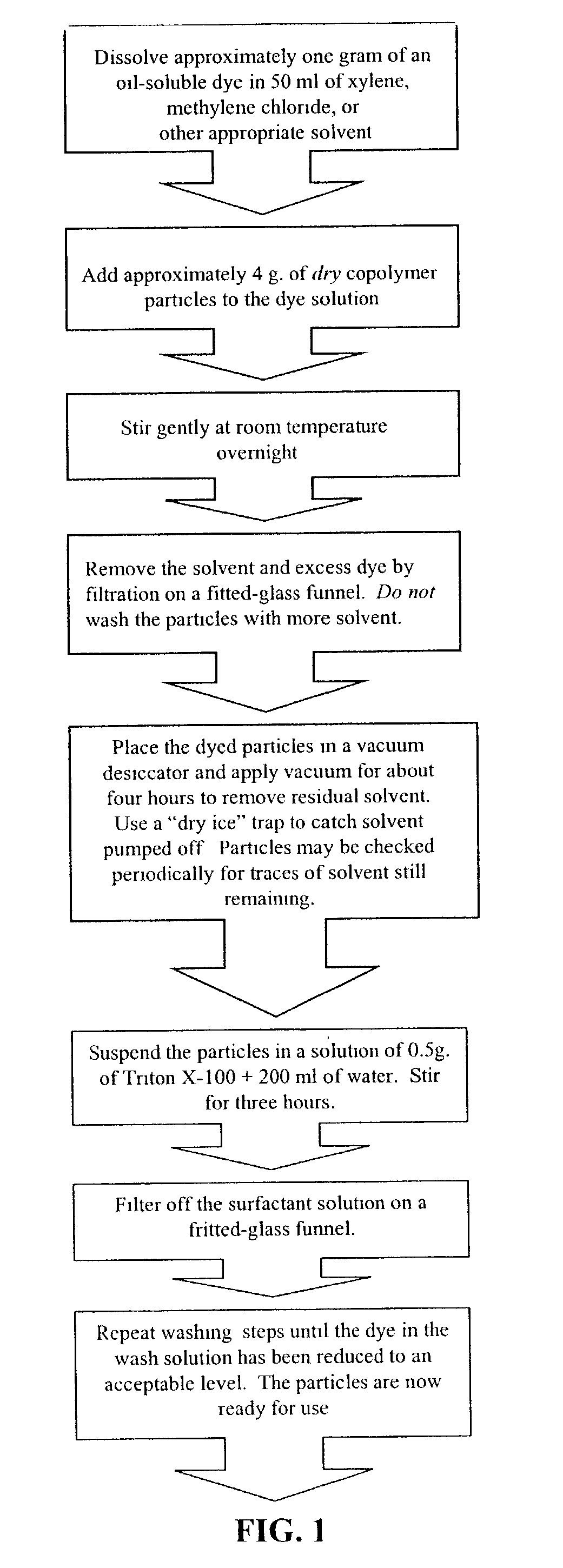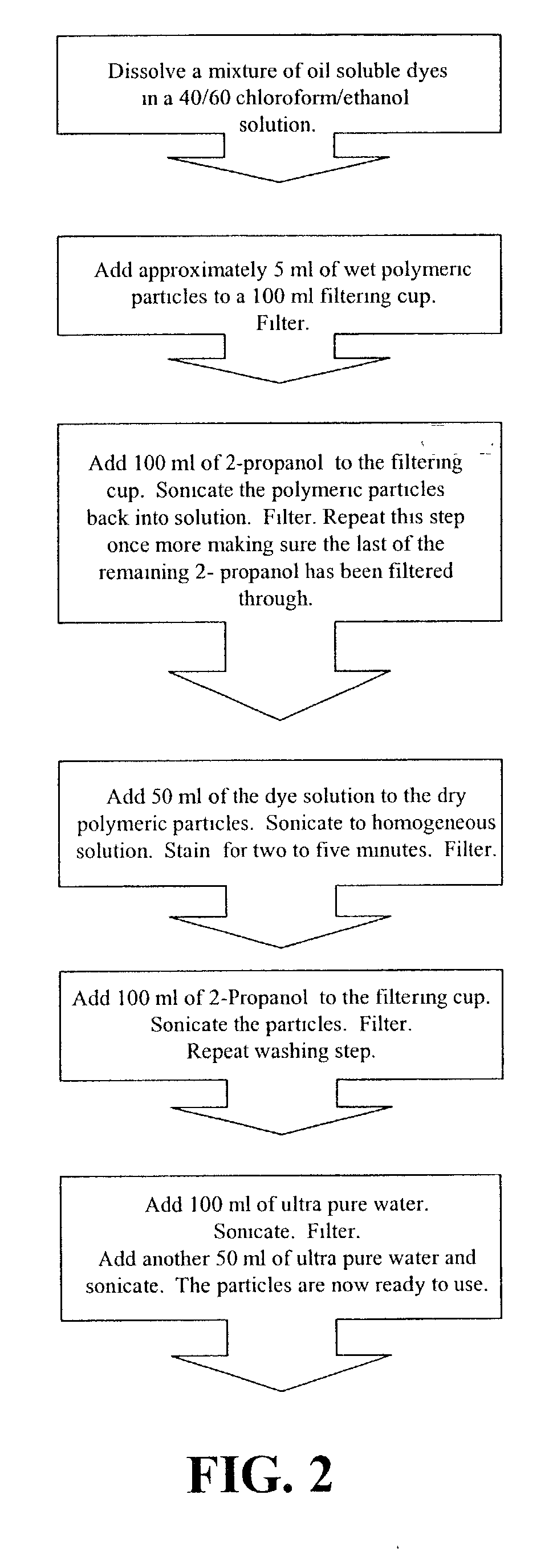Precision fluorescently dyed particles and methods of making and using same
- Summary
- Abstract
- Description
- Claims
- Application Information
AI Technical Summary
Benefits of technology
Problems solved by technology
Method used
Image
Examples
example 1
[0049] A single solution containing two different squaric acid dyes is prepared. One dye is a red fluorescent dye 1,3-bis [(1,3-dihydro-1,3,3-trimethyl-2H-indol-2-ylidene)methyl]-2,4-dihydroxy-cy-clobutenediylium, bis(inner salt) and second dye is orange fluorescent dye can be 2-(3,5-dimethylpyrrol-2-yl) -4-(3,5-dimethyl-2H-pyrrol-2-ylidene)--3-hydroxy-2-cyclobuten-1-one. The peak emission of dye #1 is 585 nm, and the peak emission of dye #2 is 630 nm. These dyes are chosen because they fall in the center of two of the fluorescence channels of a Becton Dickinson FACScan flow cytometer, which is the measurement device used to determine the precision of prior art dyeing techniques compared with this innovative new technique. The choice of fluorescence channels is, however, relative and immaterial since another flow cytometry apparatus may have different settings.
[0050] Two samples of undyed microspheres are prepared. The first is dyed with the mixture of orange and red dyes using this...
example 2
[0051] To make another population of beads with different fluorescent characteristics the ratio of red / orange dyes is altered by an adequate increment in proportion of dyes so that obtained population optically does not overlap with the former population. The prior art failed to provide multiple populations of multicolored beads due to inevitable intra-sample heterogeneity resulting from inadequate staining process resulting in poor dye distribution from particle-to-particle within given staining batch. Thus, upon excitation with a light source, stained beads containing more than one dye failed to emit uniform fluorescence signals of desired intensity. The instant invention overcomes this problem and achieves construction of as many as 64 subsets of optically distinct beads by varying the ratio of just 2 dyes. This example is not in any way a limiting one since one of ordinary skill may easily generate smaller or higher number of bead subsets by using the instant teaching. One skill...
example 3
[0057] Although multiplexed analysis capability theoretically would provide enormous benefit in the art of flow cytometry, very little progress has been previously achieved due to technical limitations in obtaining sufficient variety of multicolored, non-overlaping subsets of fluorescent beads. A review of some of these prior art techniques is provided by McHugh (see above). These methods have been unsatisfactory as applied to provide fully multiplexed assay capable of analysis of more than a few different analytes. In the prior art when beads were incorporating a combination of 2 dyes only 5 subsets of beads were allegedly obtained (U.S. Pat. No. 4,717,655 issued to Fulwyler). A set with maximum of six subsets is obtained using Bangs method (see Example 1) which is still insufficient for the purposes of truly multiplexed assay.
[0058] A series of antibodies, antigens, or nucleic acid probes, collectively named hereinafter as analytical reactants, are attached to the beads by any of ...
PUM
| Property | Measurement | Unit |
|---|---|---|
| Fraction | aaaaa | aaaaa |
| Fraction | aaaaa | aaaaa |
| Fraction | aaaaa | aaaaa |
Abstract
Description
Claims
Application Information
 Login to View More
Login to View More - R&D
- Intellectual Property
- Life Sciences
- Materials
- Tech Scout
- Unparalleled Data Quality
- Higher Quality Content
- 60% Fewer Hallucinations
Browse by: Latest US Patents, China's latest patents, Technical Efficacy Thesaurus, Application Domain, Technology Topic, Popular Technical Reports.
© 2025 PatSnap. All rights reserved.Legal|Privacy policy|Modern Slavery Act Transparency Statement|Sitemap|About US| Contact US: help@patsnap.com



